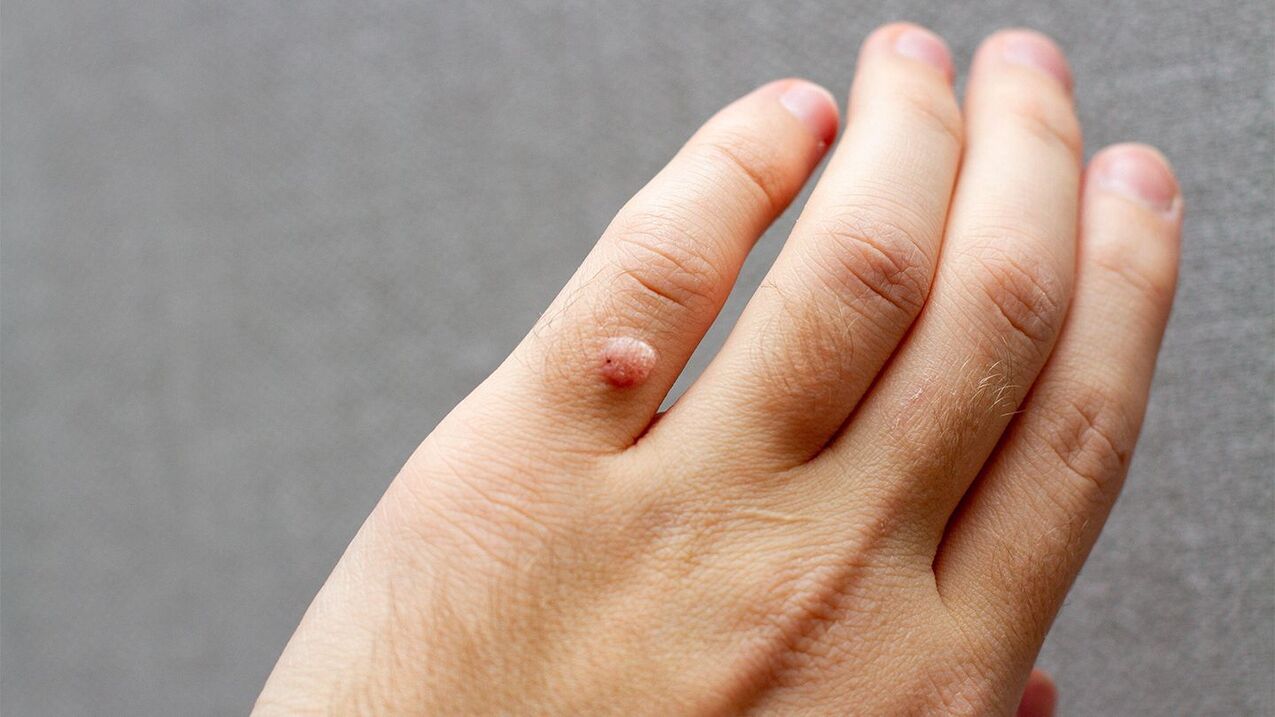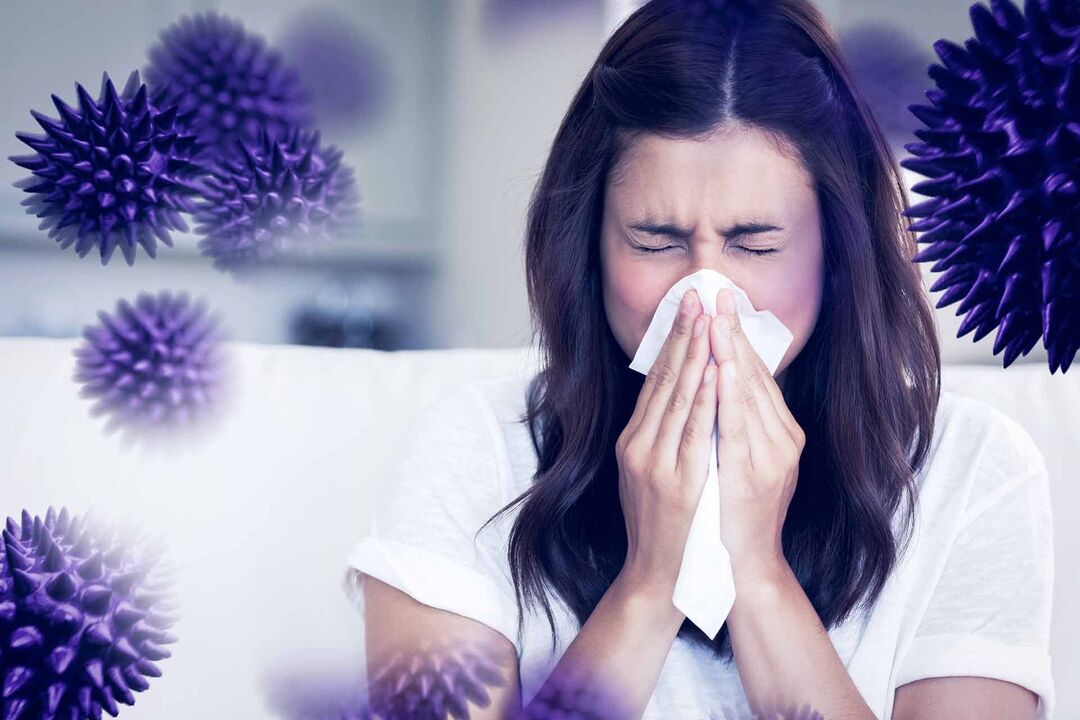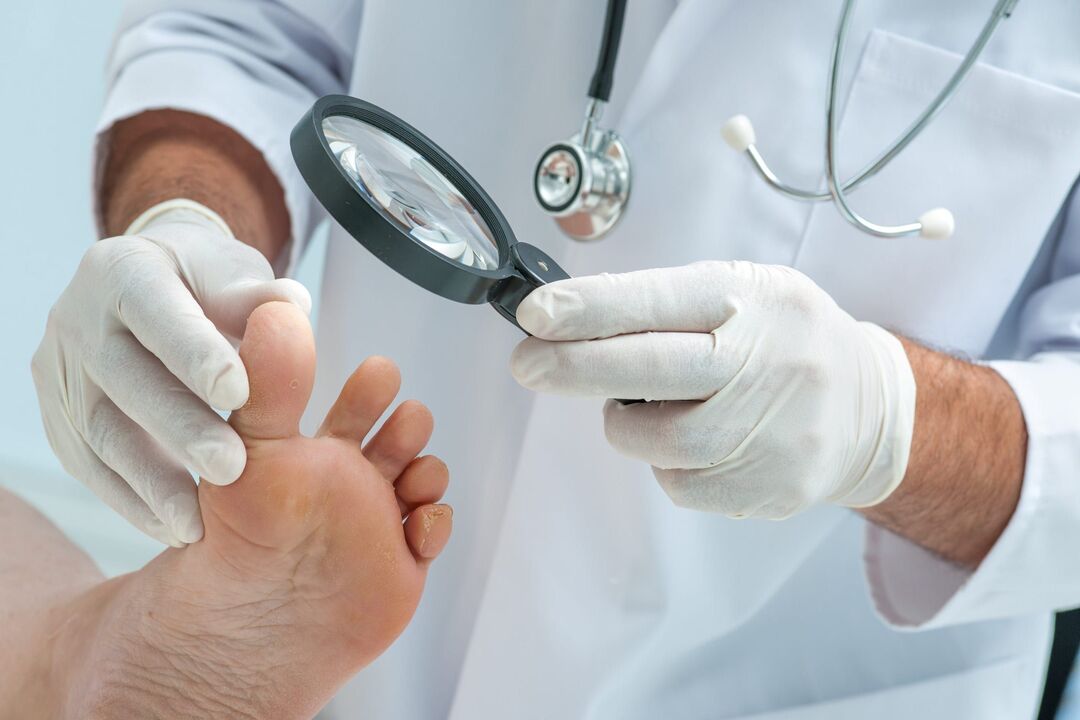First you need to understand what warts are. In essence, this is a skin disease characterized by the appearance of small spots. The size of such formations ranges from 1 mm to 1 cm or more.
The cause of warts is a virus. They can be transmitted from person to person through a simple handshake or through the use of objects used by the sick person. The incubation period can last several months. Therefore, when warts form on your body, it can be very difficult to remember who "gave" them to you.
It must be said that there are many different types of warts, so the attitude towards them must be extremely delicate. They can be located on the back of the hands, on the face, and even on the scalp. On the feet, warts often appear on the soles of the feet. If they do not cause pain in the arms, then in the legs they can cause a lot of inconvenience. Their formation can be promoted by foot sweating and shoe pressure.
A special place is occupied by juvenile warts that occur in adolescence. Usually these warts are small in size and located on the hands and face. For any type of wart, you should consult your doctor to rule out the possibility of any other skin disease.
Therefore, genital warts are sometimes confused with plantar warts, requiring consultation with a urologist and urologist. Any new growth on the skin requires utmost attention. There are cases where a growth on the skin is mistaken for a wart, and this is extremely dangerous, especially if you plan to remove it. In this case, you should not turn to folk remedies!
Such procedures should only be performed by a professional doctor, first making sure that the doctor is treating the warts. Not all warts are recommended for removal, this method is used as a last resort: if the wart causes discomfort or bleeding, if the wart causes cosmetic discomfort, if the warthas reached a large size, if it is growing at all.
If not, it is better to treat the wart. Treatment must be performed by a doctor and you must be monitored by a doctor throughout the treatment period. It must be said that improper treatment can contribute to warts degenerating into malignant tumors. Therefore, contact only professionals.
Types of warts

Warts are diagnosed more often in childhood and adolescence, but can also occur in adults. In medicine, the following types of warts are distinguished:
- Simple/vulgar.The most common type of skin tumor, in 70% of cases, is diagnosed in school-aged children. Most often, warts of this type appear on the hands, but they can also appear on the edges of the lips and on the neck. Simple warts are distinguished by the presence of one largest "mother" wart - if it is removed, the smaller growths will disappear.
- Flat/youthful.They are very rare - only up to 4% of cases are diagnosed. They are located on the back of the hands, along the edges of the lips, on the head of the penis and on the oral mucosa.
- Palmoplantar.They appear in places that are subjected to the strongest pressure from uncomfortable shoes. Diagnosing this type of wart is often difficult because the specialist must distinguish the growth in question from calluses and calluses.
- Like thread.It has a specific external appearance - a small "tail" made of thin skin, there can be many of them, and they are always arranged in a "cluster". Most commonly found in the armpits, neck and under the breasts/breasts.
Methods of removing warts on the body and hands depend directly on the type of tumor that will be diagnosed in the patient.
It is worth knowing one more feature of warts - they do not have any exact description of "appearance". For example, a wart on the sole of the foot may be a small round lump with a dark center, but a wart is simply a growth on the skin that has a heterogeneous structure. The easiest way to answer the question "what does a wart look like" is that it is of the thread type - an "ice" appears on the skin that does not cause pain or irritation. It is noteworthy that frequent rubbing of warts leads to inflammation and irritation - it becomes red and can cause pain.
Where do warts come from?
It's all due to the human papilloma virus (HPV), which is usually transmitted through direct contact with warts or personal belongings of an infected person. Four of the dozens of types of HPV cause skin warts.
HPV can easily be called "cunning. "A person may not suspect for a long time that he has become the owner of HPV.
After infection, the virus will be localized in the upper layer of the epidermis and may not manifest itself for a long time. But as soon as the protective mechanism weakens, the virus becomes active and manifests itself in the form of one or more warts.
From the moment of infection to the appearance of ulcers on the skin, it can take from a week to several months.
Location
Which doctor to contact when treating warts depends directly on the location of the tumor.
Depending on the type, warts can grow all over the body, specifically:
- on legs and arms, on feet;
- in the armpit area, under the chest and on its surface;
- on the face, neck and head;
- on male and female genitalia;
- on the mucous membranes of the vagina, esophagus, larynx;
- in mouth. on the tongue and inner surface of cheeks and lips;
- on the body under clothes.
The reason appeared

It is very easy to get infected with human papillomavirus (HPV).
Just being in close contact with someone who has a tumor on their skin is enough.
However, the disease does not appear immediately, and warts may not begin to develop until months or years after infection.
Factors affecting HPV activity:
- weakened immunity;
- exacerbation of chronic diseases;
- emphasize;
- Malnutrition;
- bad habits;
- passive lifestyle.
What to do if warts have appeared
Let's go back to the survey results. Only 28% of respondents with warts consulted a doctor. It seems like the prospect of surgical removal procedures is scarier than warts. 34% of study participants tried to remove the wart themselves, and 16% decided not to take any action because they did not take it seriously.
Why do you need to remove warts?
For those who are still unsure whether to remove warts or not, it is important to know the following.
- First, warts are contagious. To do this, it is enough to come into direct contact with the wart or the personal hygiene items of the person carrying it.
- Second, warts tend to "conquer territory", that is, spread to healthy areas of skin. This process is called autoinfection (self-infection).
Obviously, it is easier to treat warts in the early stages of the disease, which will save time, effort and money later. Furthermore, in pharmacies you can buy products to remove warts yourself.
When to see a doctor
- if the wart quickly changes shape, color or all together;
- if the wart has an uneven color;
- if the boundaries of the wart are blurred (in this case it is most likely not a wart);
- if the wart is painful or constantly injured (this increases the risk of degenerating into a more serious disease);
- if the number of warts gradually increases;
- if the wart bleeds or itches;
- if warts have formed in the genital area.
Which doctors treat warts in children and adults?
If a tumor appears in any part of the body, you should contact a doctor who specializes in treating skin diseases - a dermatologist.
- It is he who conducts the examination and decides whether further diagnostics are needed (blood tests, PCR tests, biopsy).
- In some suspicious cases, where warts show signs of melanoma, a dermatologist may recommend consulting an oncologist or dermatologist.
- In most cases, the doctor decides to remove the wart, after which its tissue is sent for histological examination to ensure that there are no signs of malignancy.
- Warts on the mammary glands in women can cause breast cancer and should be examined by a mammologist.
Remove warts

Wart removal is a radical method and is done in many ways. Warts can be removed using lasers. Along with that, cryotherapy and electrocautery are used. You can effectively remove warts using homeopathic medicines. Each method has its own strengths and weaknesses.
When choosing a method to remove warts, doctors are often guided by the location of the warts on the body. Therefore, laser removal may leave scars. Sometimes scar formation is observed after using the Surgitron device, so the doctor must choose the method of wart removal: depending on the location of the wart.
Cryotherapy and electrocautery are gentle methods for removing warts. The electrocoagulation process is carried out using a special device that uses high-frequency electric current. Due to the use of this device, the temperature of the tissue increases and the wart is destroyed, which leads to the death of the virus.
Cryotherapy is also electrocautery, but only with liquid nitrogen. The procedure is quite painful and does not leave any scars. Speaking about these two methods, it is worth noting that their use eliminates contact with blood, which is extremely important. You can only trust a doctor with experience in this field to remove warts.
After removing the wart, you need to think about how to avoid getting this infection again.In no case should you tear or tie warts at the base so that they fall off on their own! Such unreasonable behavior can lead to serious health problems - for example, the wound can become infected, and due to tightening of the tumor base, blood flow can be disrupted.
A dermatologist or cosmetologist will tell you how to remove warts on the hands of children and adults, what procedures will help you forget about tumors on the body and face - you can contactContact any of these experts. There are three main methods for removing warts:
- Laser therapy.Usually, this method is used to remove warts in the most sensitive and painful places or if the patient wants to avoid scarring. Removing warts on the face with laser is the optimal solution because this method is painless, does not require a long recovery time and does not leave scars on the skin afterward.
- Cold destruction.This involves the use of liquid nitrogen, which literally burns away the tumor without leaving a mark on the skin, although in some cases it can leave a small scar. After removing warts with liquid nitrogen, the patient will need to avoid direct exposure to sunlight; in the future, a small white spot may remain at the site of the procedure.
- Drug treatment.It is used in combination with the above methods. There are many medications that work topically and help destroy warts faster. The most effective treatment for warts is celandine extract, applied to each spot on the growth. You should not use celandine on its own to treat warts - if its juice gets on healthy skin, it will cause severe burns.
Removal of this type of skin tumor must be comprehensive. Visiting a doctor and finding out the cause of warts on fingers or face is not enough, you must follow all the prescriptions and recommendations of the specialist. Even with appropriate treatment, recurrence of the disease is noted quite often - in 40-50% of cases, warts reappear.
You can find more information about what warts are, which doctor to contact to treat plantar warts, and the meaning of the term "general therapy for human papillomavirus" onpage on our website.
Is it possible to remove warts yourself?
Warts can be removed at home, but only after being diagnosed by a specialist.
There are special acne medications that can eliminate growths after the first use. They have the effect of causing burns and necrosis.
These medications are toxic and can cause tissue burns around the wart, so use with caution. It is not recommended to remove warts at home in places with especially fragile and sensitive skin (on the face, neck, mammary glands and genitals). You also need to make sure that the wart is completely gone and that there is no root or any other part of the wart left. The reproductive potential of warts is so great that even a small piece of tissue can become a source of infection in healthy areas of the dermis.
When using pharmaceuticals, you must strictly follow the instructions for use and pay close attention to contraindications. Most of them are prohibited for use in children, pregnant and lactating women.
Warts are an external manifestation of an unsatisfactory internal state of the body. It is important not only to eliminate the symptoms of the disease, but also to constantly fight the virus. The human immune system can cope independently with pathogens if it is provided with all possible help. To do this, it is enough to lead a healthy and active lifestyle, strengthening the body with sports and healthy food.
symptoms
Genital warts under certain conditions (for example, in case of infection with sexually transmitted diseases, reduced general and/or local immunity) can increase in size and develop, due tothat worsens a person's sex life and significantly reduces his or her quality of life.
In addition, inflammation and suppuration of genital warts, as well as their ulcers, can develop as a result of prolonged mechanical impact on them. In rare cases, their malignant degeneration may occur.
Advice for patients with warts
- Because two-thirds of cases go away on their own within 2 years, warts may appear without treatment. As old lesions heal, new warts may appear. This is not a consequence of treatment failure but is part of the natural history of HPV infection.
- Treatment often takes weeks or months, so patience and perseverance are necessary for successful therapy.
- Tools that have been used to remove warts, such as nail files and pumice stones, should not be used on healthy skin or on other people. For the same reason, if the wart is located in hairy areas of the skin, you should use a depilatory or electric razor to remove the hair in these areas or not remove the hair at all, thereby limiting the growth of the wart. spread of warts.
- To monitor and evaluate the results of treatment, it is necessary to visit the doctor several times. • If the patient is self-treating, he or she can optionally schedule a follow-up visit with the doctor.
Prevent
Preventive measures include:
- vaccination with quadrivalent vaccine (against HPV types 6 and 11, 16, 18);
- exclusion of casual sexual relations;
- Use contraceptives (condoms);
- comply with personal hygiene rules;
- Timely and adequate treatment of infectious and inflammatory diseases of the pelvic organs;
Frequently asked questions
Which doctor treats warts?
For warts, it is best to consult a dermatologist. Dermatologists specialize in treating skin conditions and are experienced in removing warts.
Can I see a general practitioner with a wart problem?
Yes, you can see a general practitioner, e. g. He will be able to conduct an initial consultation and, if necessary, refer you to a specialist - a dermatologist.
What methods do doctors use to treat warts?
Doctors can use a variety of methods to treat warts, including cryotherapy (cooling the wart with liquid nitrogen), chemical removal, and electrocautery (using an electric current to remove the wart). ) and laser removal. The doctor will choose the most suitable method depending on the characteristics of the wart and the patient's personal characteristics.
Helpful advice
Tip #1
See a dermatologist. Dermatologists specialize in skin conditions and can help you treat warts. He will conduct an examination, diagnose and offer the most effective treatment.
Tip number 2
See an oncologist. Warts may be related to human papilloma virus (HPV), which can cause skin cancer. Dermatologic oncologists specialize in diagnosing and treating skin cancer, so they can conduct additional tests and recommend appropriate treatment if necessary.

























